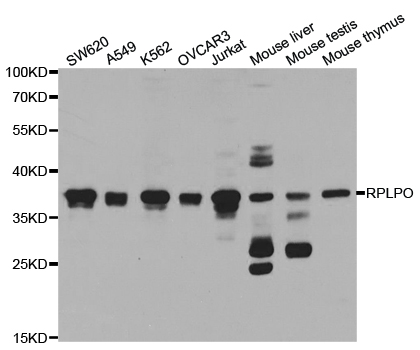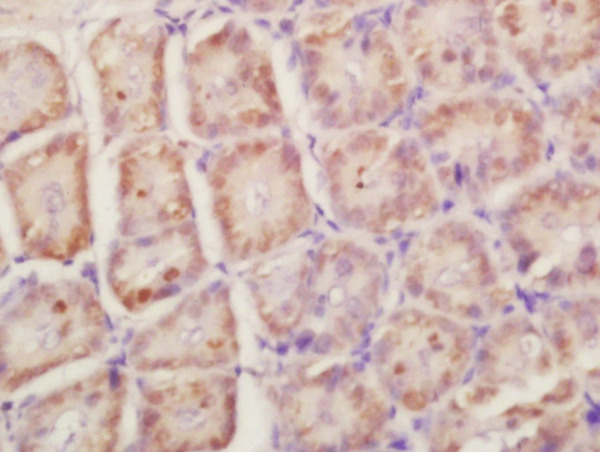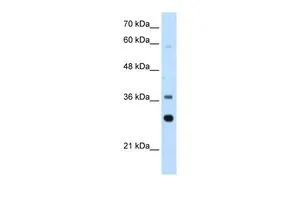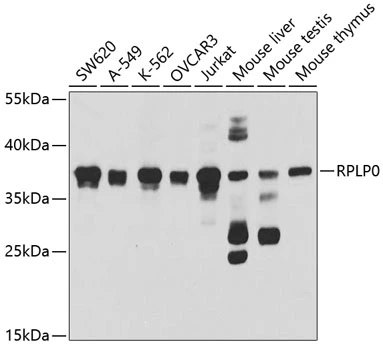RPLP0 antibody
GTX114730
ApplicationsWestern Blot, ImmunoHistoChemistry, ImmunoHistoChemistry Paraffin
Product group Antibodies
ReactivityHuman
TargetRPLP0
Overview
- SupplierGeneTex
- Product NameRPLP0 antibody
- Delivery Days Customer9
- Application Supplier NoteWB: 1:500-1:3000. IHC-P: 1:100-1:1000. *Optimal dilutions/concentrations should be determined by the researcher.Not tested in other applications.
- ApplicationsWestern Blot, ImmunoHistoChemistry, ImmunoHistoChemistry Paraffin
- CertificationResearch Use Only
- ClonalityPolyclonal
- Concentration0.34 mg/ml
- ConjugateUnconjugated
- Gene ID6175
- Target nameRPLP0
- Target descriptionribosomal protein lateral stalk subunit P0
- Target synonymsL10E, LP0, P0, PRLP0, RPP0, uL10, large ribosomal subunit protein uL10, 60S acidic ribosomal protein P0, 60S ribosomal protein L10E, acidic ribosomal phosphoprotein P0, neutral ribosomal phosphoprotein P0, ribosomal protein, large, P0
- HostRabbit
- IsotypeIgG
- Protein IDP05388
- Protein NameLarge ribosomal subunit protein uL10
- Scientific DescriptionRibosomes, the organelles that catalyze protein synthesis, consist of a small 40S subunit and a large 60S subunit. Together these subunits are composed of 4 RNA species and approximately 80 structurally distinct proteins. This gene encodes a ribosomal protein that is a component of the 60S subunit. The protein, which is the functional equivalent of the E. coli L10 ribosomal protein, belongs to the L10P family of ribosomal proteins. It is a neutral phosphoprotein with a C-terminal end that is nearly identical to the C-terminal ends of the acidic ribosomal phosphoproteins P1 and P2. The P0 protein can interact with P1 and P2 to form a pentameric complex consisting of P1 and P2 dimers, and a P0 monomer. The protein is located in the cytoplasm. Transcript variants derived from alternative splicing exist; they encode the same protein. As is typical for genes encoding ribosomal proteins, there are multiple processed pseudogenes of this gene dispersed through the genome. [provided by RefSeq]
- ReactivityHuman
- Storage Instruction-20°C or -80°C,2°C to 8°C
- UNSPSC12352203
References
- Meier S, Bell M, Lyons DN, et al. Pathological Tau Promotes Neuronal Damage by Impairing Ribosomal Function and Decreasing Protein Synthesis. J Neurosci. 2016,36(3):1001-7. doi: 10.1523/JNEUROSCI.3029-15.2016Read this paper
- Meier S, Bell M, Lyons DN, et al. Identification of Novel Tau Interactions with Endoplasmic Reticulum Proteins in Alzheimer's Disease Brain. J Alzheimers Dis. 2015,48(3):687-702. doi: 10.3233/JAD-150298Read this paper







